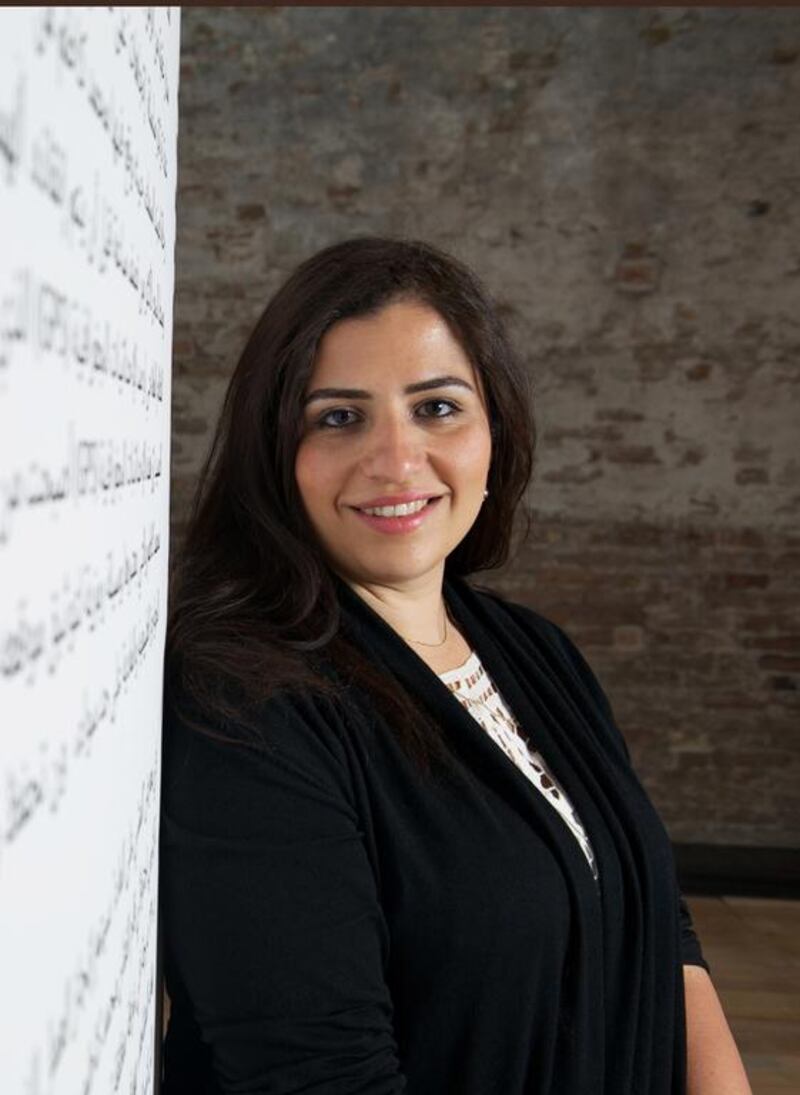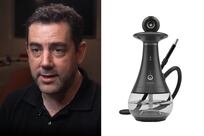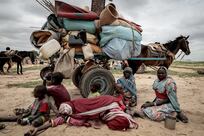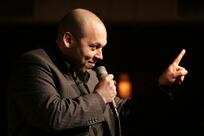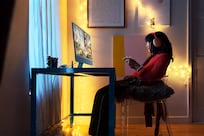Towards the end of 2014, Reem Fadda was approached by Morocco’s Marrakech Biennale to curate its sixth edition, which opens on Wednesday and runs until May 8.
She says that it has been an ambition for some time to explore the art of North Africa, beyond what academia offered.
Fadda has also been Associate Curator at the Guggenheim Abu Dhabi for six years, and co-curated Emirati Expressions IV: Conventions of Arts, on show at Manarat Al Saadiyat until March 31.
The National caught up with the Palestinian curator in Marrakech during the final preparations for her first biennale.
Marrakech Biennale artistic director, co-curator of Emirati Expressions and Associate Curator at the Guggenheim Abu Dhabi – how do you structure your thinking for them all?
Everything is scale and scope. I've been with the Guggenheim Abu Dhabi for six years – it's part of who I am and it doesn't flush out. My tasks there easily conflate with me being in the biennale. Though I took leave from the Guggenheim, you never leave because who you work for and represent is a part of you. Research on Emirati Expressions began in April 2014, way before I was working on the biennale. I've had great teams and assistance on all fronts and you need to delegate and admit that you can't do everything. The biennale is not just a team, there are 15 soldiers who are very competent and dedicated. It's a perfect machine moving forward.
Why take on the biennale?
I wanted to get out of my comfort zone and go back in the field and work directly with artists on producing work, and live in a city that I am unfamiliar with but have always wanted to explore. North Africa is a terrain that I hadn’t visited, not most of it at least, and that is still missing in my domain of knowledge and expertise. I wanted to fully engross myself in it and this was a great opportunity. I don’t like doing things halfway – I like to have studied and lived in a place and know its society. Living here is a dynamic way of learning and being a real participatory agent, and that is a much better way to develop my curatorial knowledge.
How did you come to decide on the theme, Not New Now?
I have been obsessing about the idea of time and our relationship with society and art, or the equation of politics and art.
It was great for me to unravel these ideas in this city – one that is intrinsically Africa and has ties to Europe and Asia, so it’s a laboratory. It was soothing to see that the city doesn’t have modern, made-up structures. You can start from a tabula rasa [blank slate] where art is for art and for the sake of society. I am now obsessing with the term “living art”, using it to replace the idea of contemporary art, which means “now” and doesn’t demand action – “living art” means it’s for people who are living and for society in terms of time. It means that it is alive. These are minute distinctions but they harness what I want to talk about in the biennale. The idea of “now” is important because our times require action. I don’t want it to be about the past and nostalgia, or about the future and planning – I want it to be about action.
Such a thoughtful theme requires a serious selection of artists.
I’m an art historian, so I know that history. I came here and found what I’ve been searching for – it all unravels. A level of me works by intuition and falling in love. I came across an artist, Khalil El Ghrib, who lives in Asilah – he is anti-market, doesn’t sell his work and lives in seclusion. I saw his works about decay and decomposition and wanted to meet him immediately. His ideas are concerned about materiality and how we live and I am fascinated by this. He is a philosopher, thinker, an encyclopaedia who was happy to be part of the biennale.
artslife@thenational.ae
